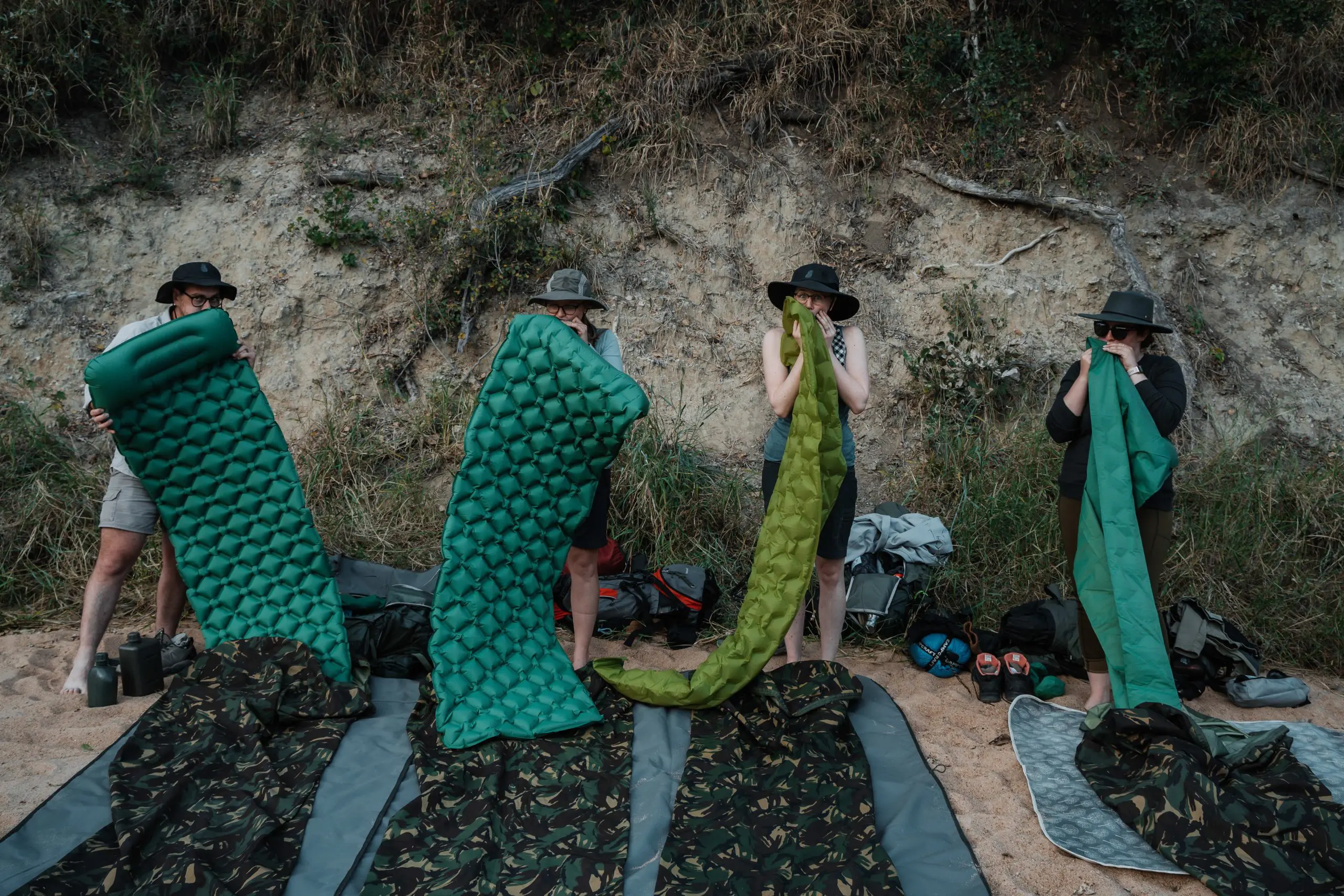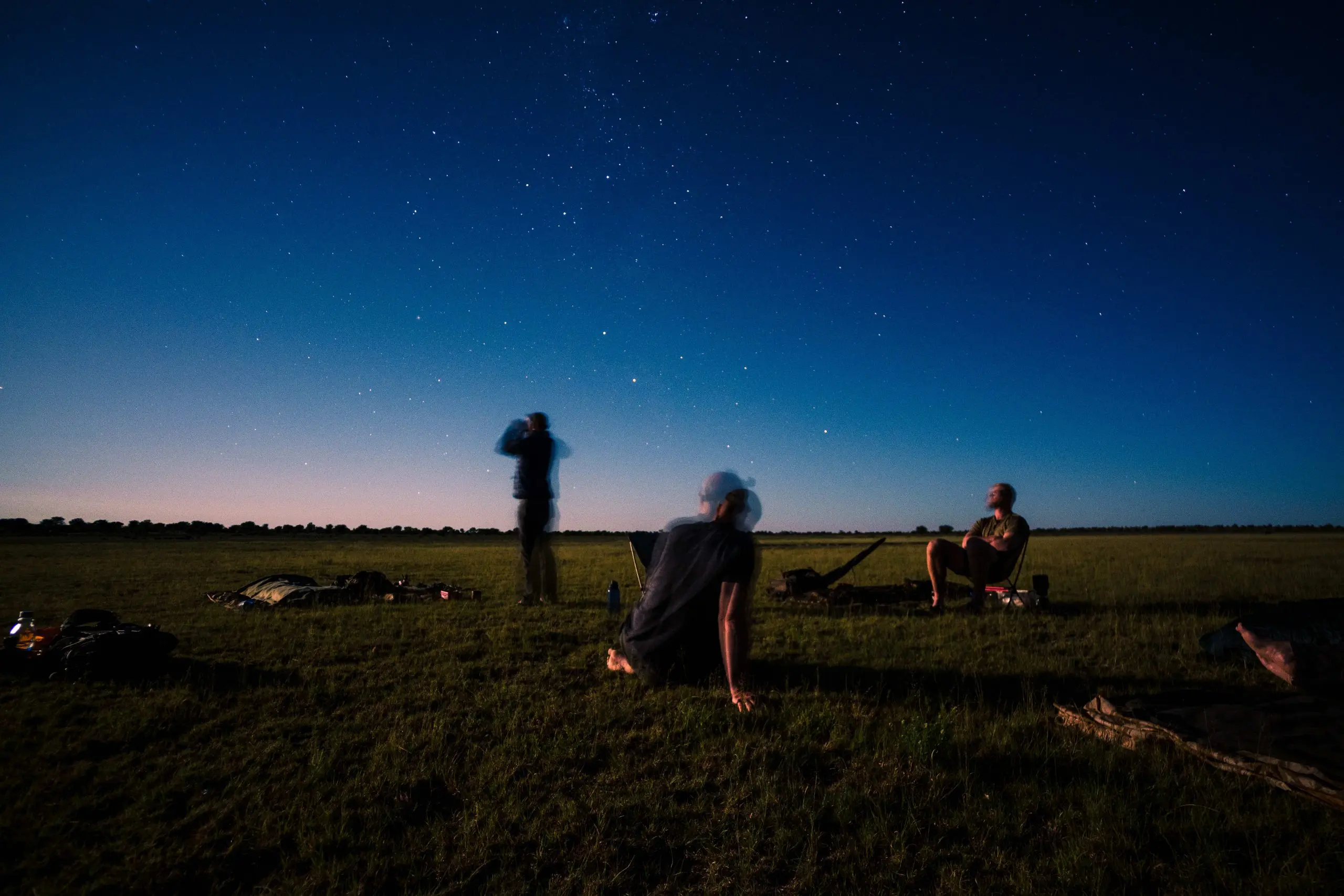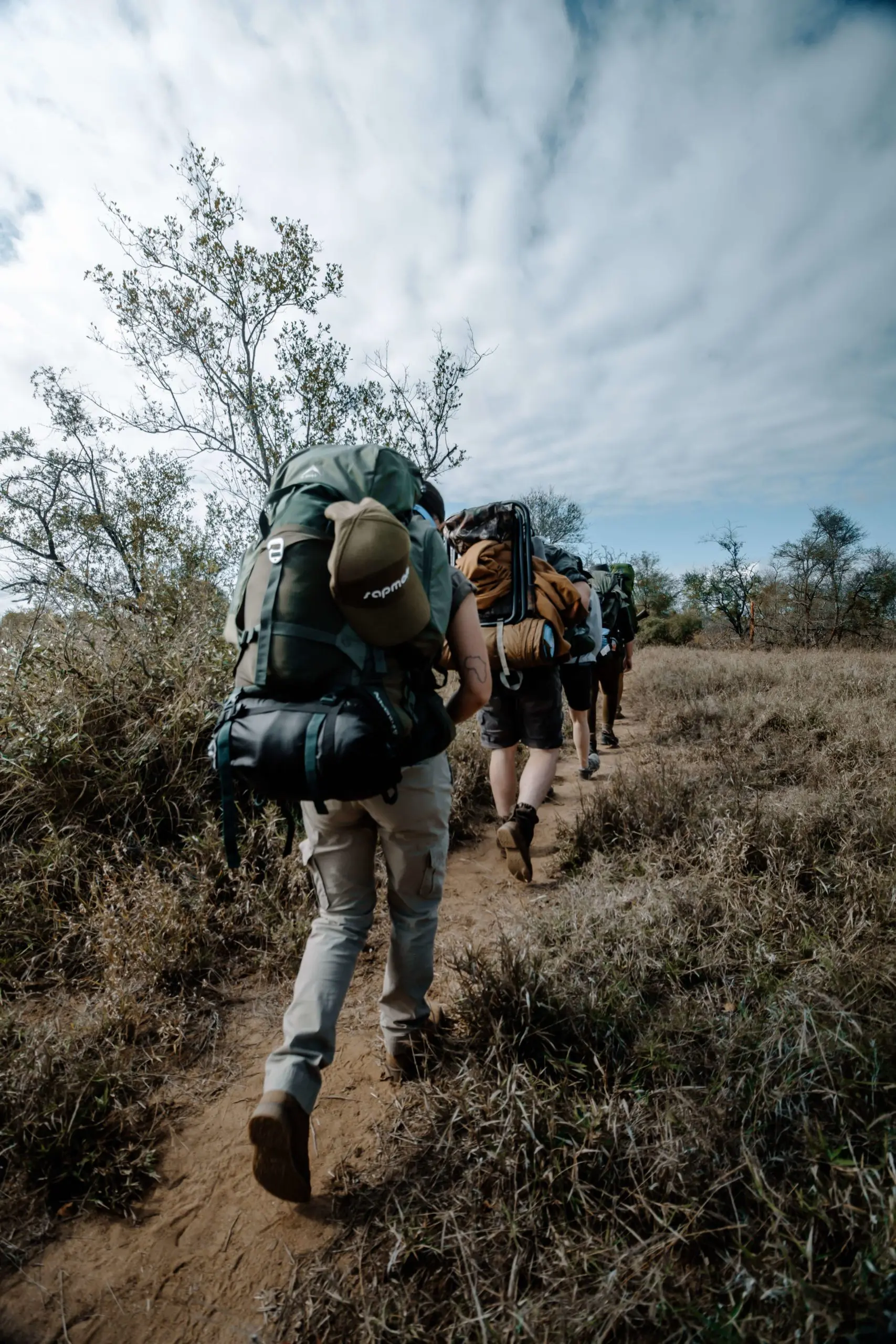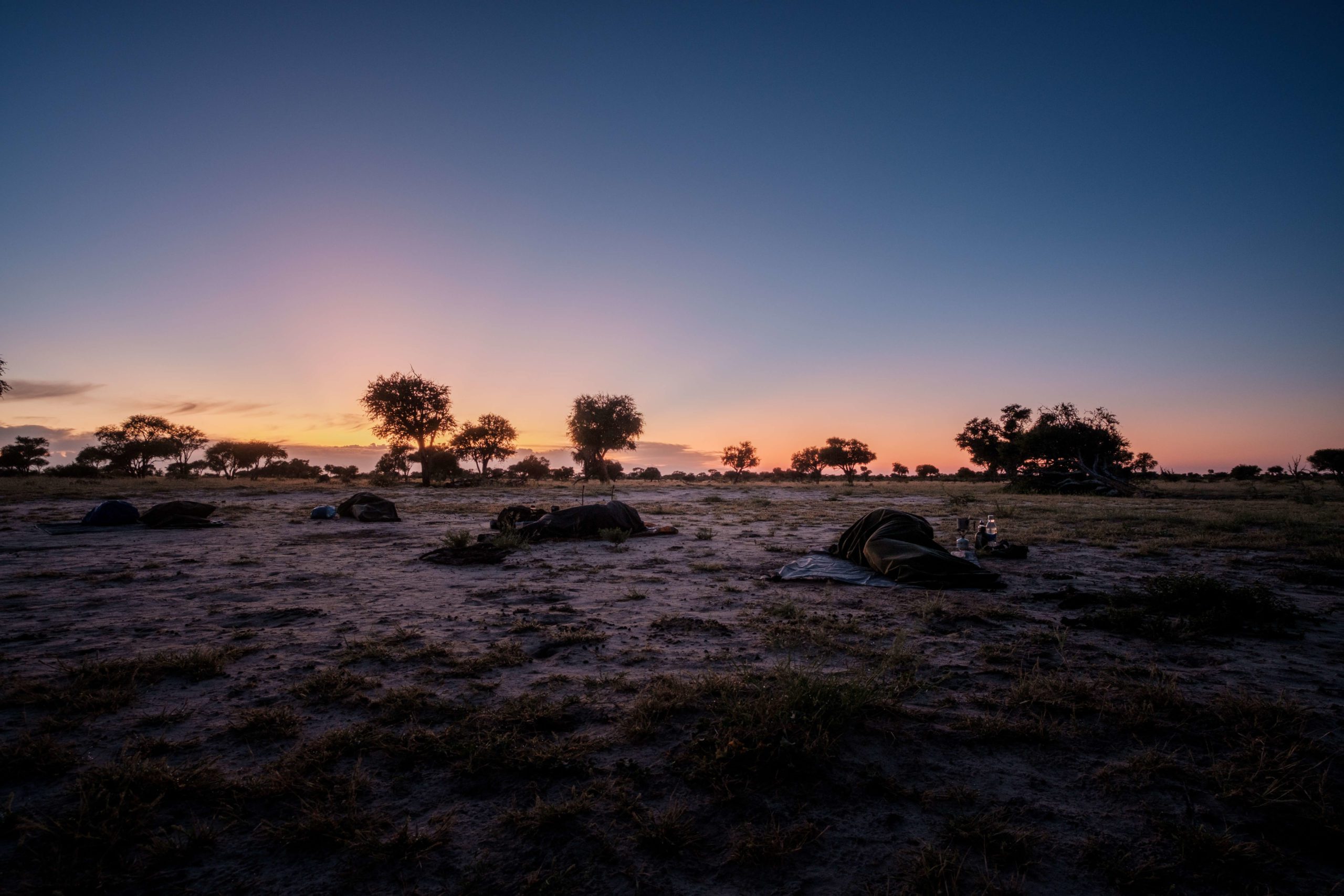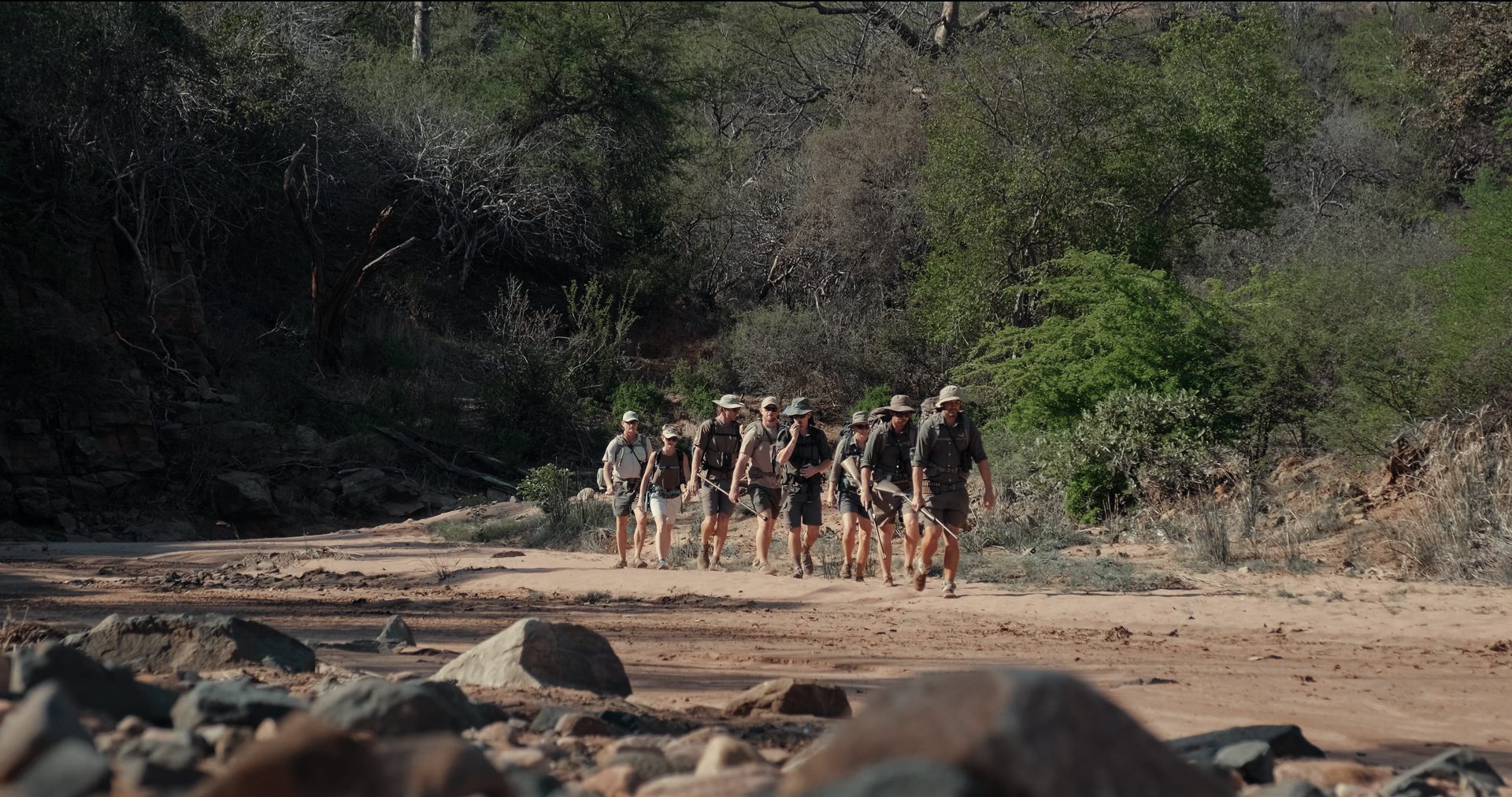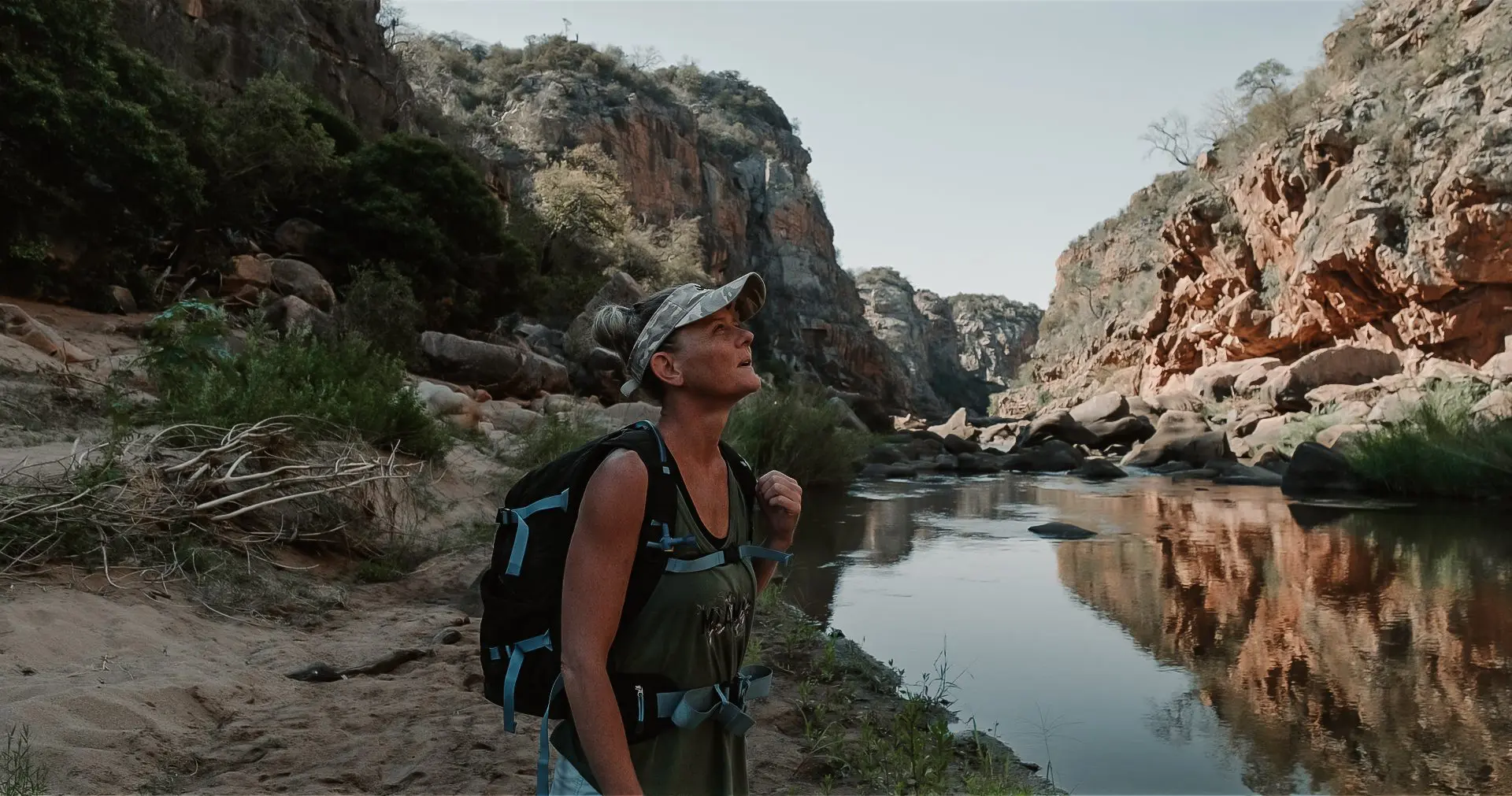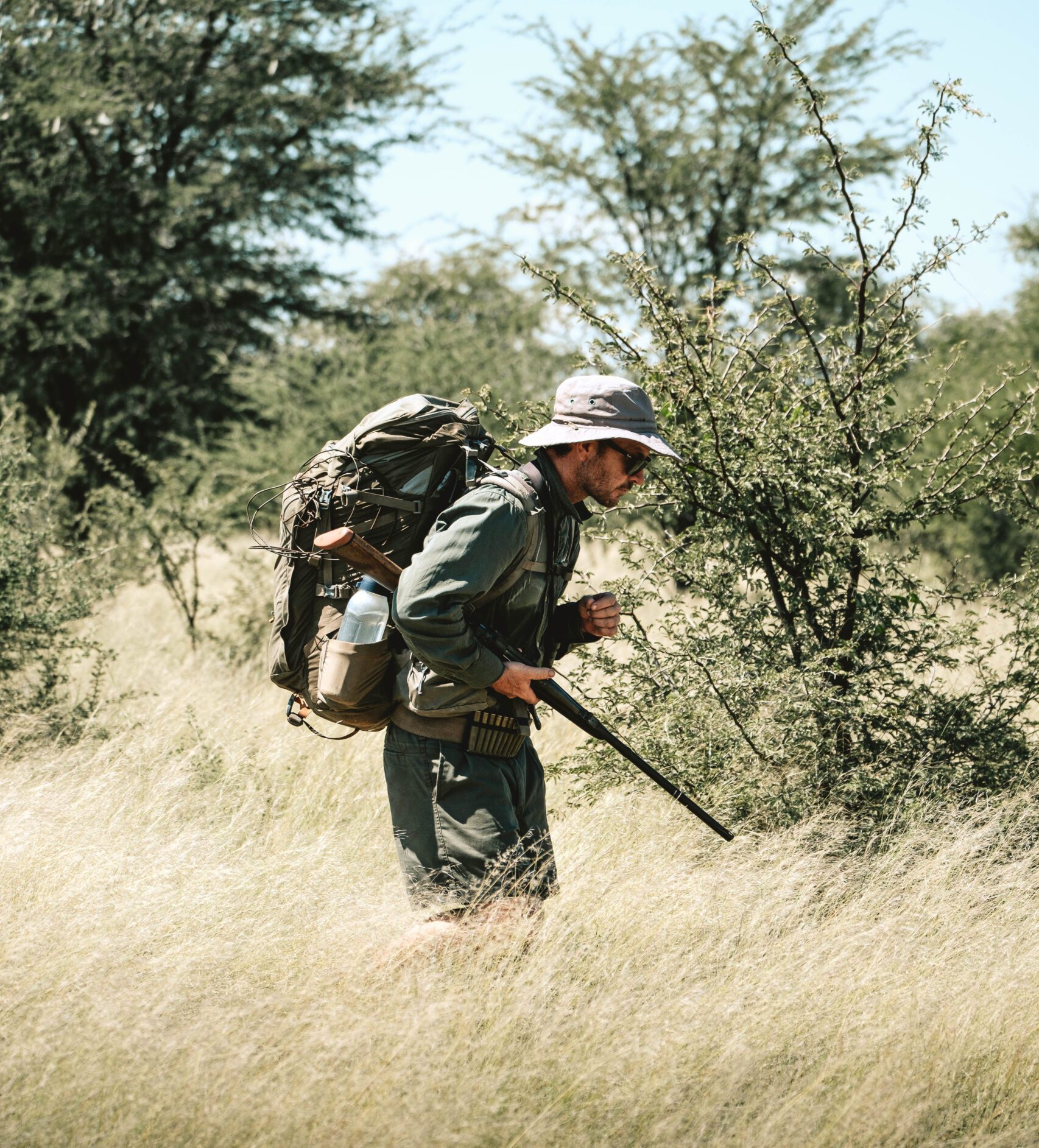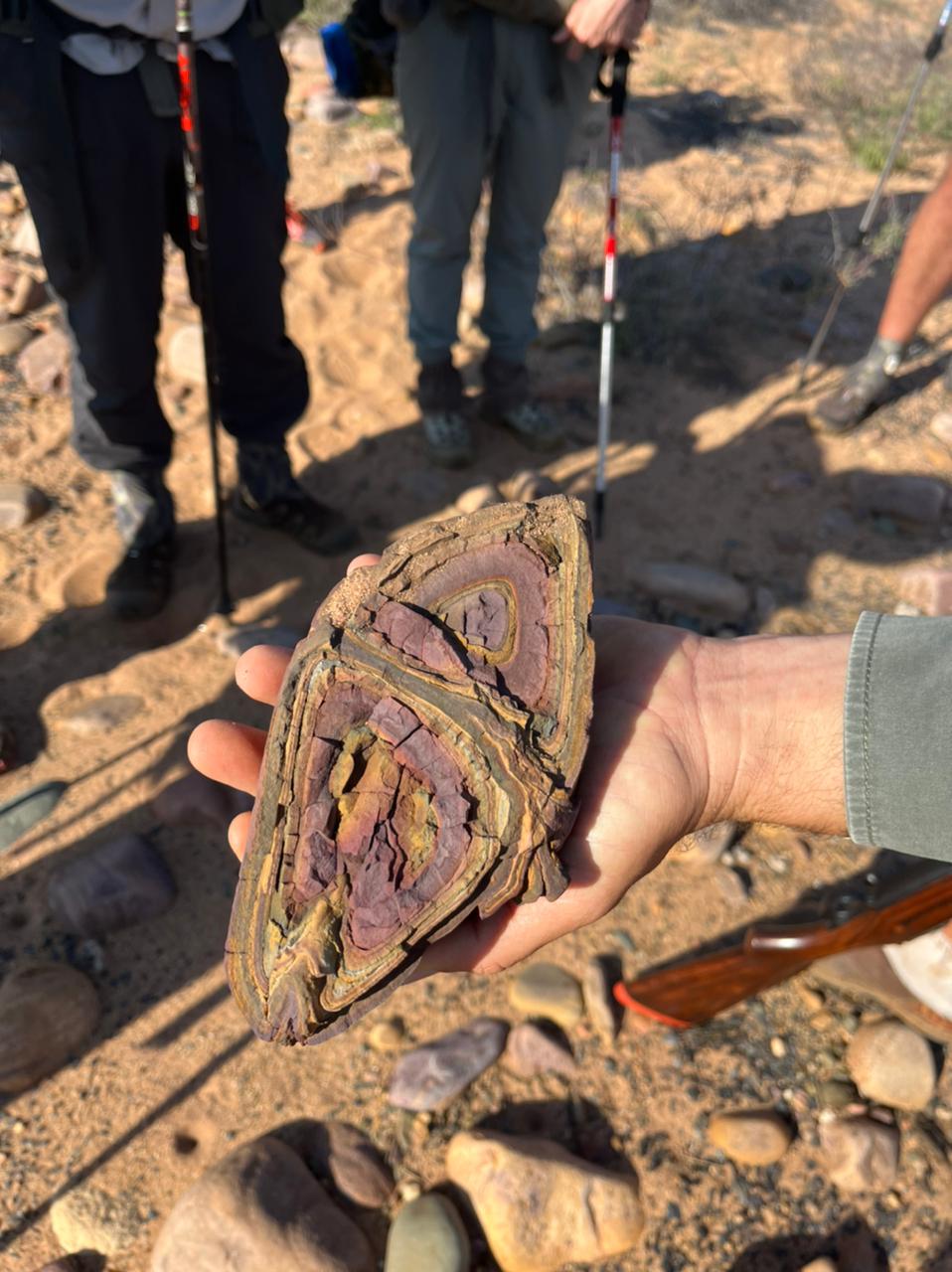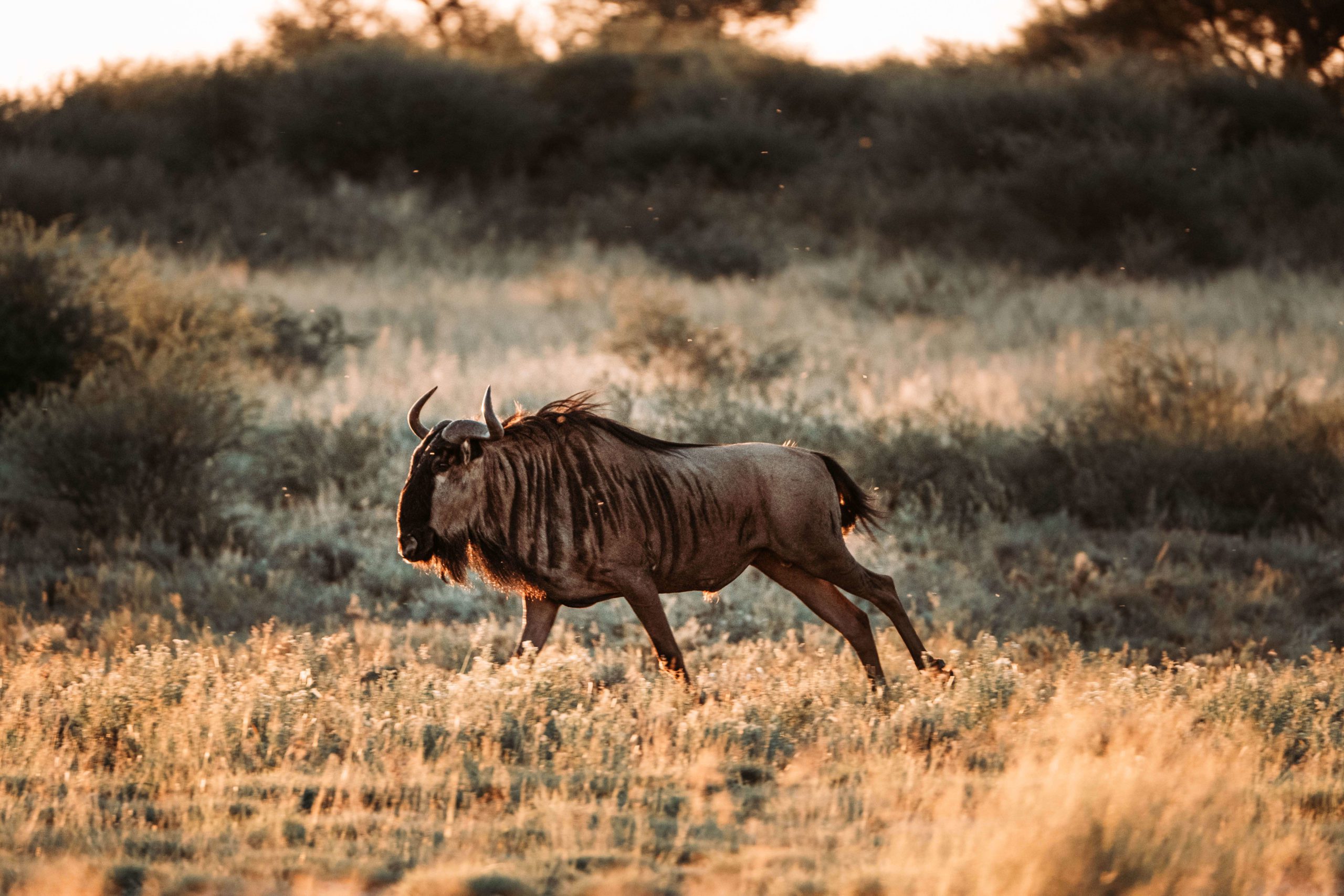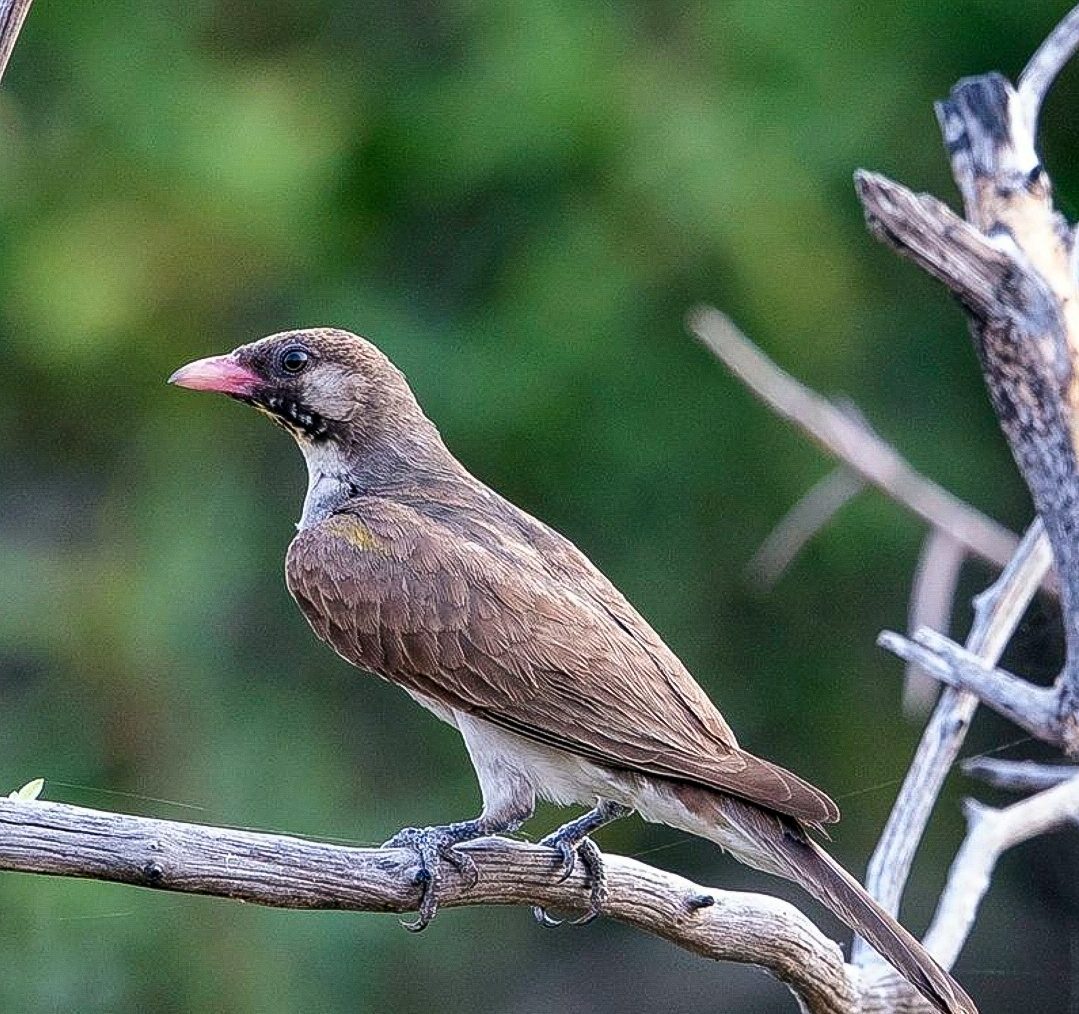A Lowveld Trails Co. ‘Primitive Trail’ is an opportunity to rediscover your relationship with the natural world. Yet, stepping out into the open savanna with its potentially dangerous animals may leave you feeling exposed and vulnerable. Nevertheless, being open to the experience and placing yourself ‘out there’ is probably as important for your personal growth and development as it was for early hominids when they left the forest along the human journey.
It may seem that humans are preposterously vulnerable out in the African savanna. Nearly every large animal that occupy this space is stronger, faster and ‘toothier’ than us. So, how did it come to be that our species survived the savanna for hundreds of thousands of years, despite this imminent threat from dangerous animals?
Humans have almost always had two major advantages. First, we have a powerful brain with which we devise strategies to avoid confrontation with potentially dangerous animals. In fact, from as early on as the route planning stage, Trails Guides strive to minimize unnecessary risk. Once in the field, Trail leaders continuously process a wide range of variables (inputs) as the group moves through the natural landscape. Basic considerations include the position of the Sun and direction of the wind in relation to the Trail group. For example, animals such as Elephants have an excellent sense of smell, but relatively poor eyesight. So, by keeping the Sun behind the group and remaining downwind of the Elephant, it is unlikely that the group will be noticed.
The next level of considerations is associated with the animal species that is encountered, their social structure and behavior. This information will directly influence the extent of their comfort zone, alert zone, warning zone and critical zone (levels of personal space). By further incorporating the landscape (terrain) with regards to barriers and ‘points of safety’, the Trails Guide will assess the situation and decide to view the animal or extract. If the decision is taken to view the animal, the group will be moved into the safest (not necessarily the best) position to do so. Trails Guides are mindful of the animals they encounter and wish to view them while they display natural behavior, undisturbed by the group’s presence. They therefore strive to get the group into position, view and leave without being noticed.
Even before an animal is encountered there are subtle clues that the Trails Guide can make use of as an early notification system. Animal tracks and signs provide a valuable source of information. Not only does it update the Trails Guide to which animal has past, and in which direction it has moved, but it also provides a time frame of its passing according to the ‘freshness’ of the tracks. This information often directs the group away from or towards animals before they have even been seen.
Similarly, the vocalization of birds such as Oxpeckers may give away the location of animals. Oxpeckers are birds that spend a great deal of time on large mammals as they feed on their external parasites such as ticks. Their sharp, high-pitched calls may indicate the presence of potentially dangerous animals such as Buffalo, Black Rhino or Hippo which can then be avoided if other variables are not favourable. All of the above contribute towards a Trail Guide’s overall ‘situational awareness’ that steer the group clear of unnecessary risk.
The human’s second advantage is that we have hands with which we can fling or brandish hurtful objects. We are the only creature that can harm at a distance. The more the human tools advanced, the greater a threat we became to the potentially dangerous animals of the savanna. We used spears to kill or chase predators off fresh kills to access protein or protect ourselves from attacks. Thanks to our ancestors, the potentially dangerous animals of the African savanna have an instinctive fear of man. They almost always avoid man and his tools by placing distance between themselves and the human threat.
However, it will be foolish to believe that we are untouchable. Confrontational events that pose a risk of injury or death are extremely uncommon, but they may still occur. As an absolute last resort we have developed a very efficient tool (firearm) to neutralize such a threat.
Thankfully, the African savanna has proved to be a very forgiving environment, especially if we were to compare it to the freeways and major urban centers of the modern world today. Statistically, you are more likely to incur injury or death during your passage than on the Trail itself.
Perhaps the greatest risk is the absence of humans in their natural habitat. The progressive loss of direct human-nature interaction in wild places has become known as the ‘extinction of experience’. The removal of humans from their natural habitat negatively impacts our well-being and compromises any efforts made towards conservation.
“The great trail is rich in exposure and low in impact. Enduring imprints taken away, fading footprints left behind. The technique of a stealth hunter suit in the changed context. What we feel today is what our ancestors felt then. And that is what makes it so special. But if the special is to be secured for the future, we cannot be strangers in the wild.” – Clive Thompson
